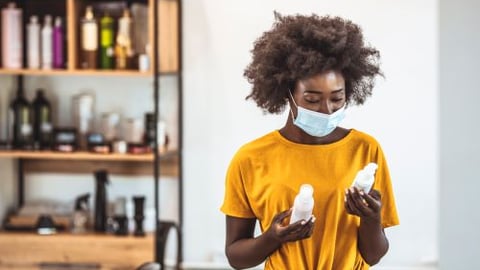Shifts with Staying Power: How Brands Are Adapting to Embrace Disruption
More than three months into the COVID-19 crisis, we have a clearer picture of how consumer behavior has shifted and which changes are likely to stick around even as the economy opens up and our nation tries to return to some semblance of normalcy.
The shifts that look like they’re here to stay include consumers prioritizing value versus items that are nice to have; at-home entertainment; social distancing where possible; and e-commerce breaking through with all customer segments.
Accelerating Existing Shifts
While the shift of ad dollars from TV to digital began before March, it has certainly accelerated in these past several weeks. Streaming services will continue their dominance with consumers, as more cut the cord and look to specific platforms to fill their need for at-home entertainment.
While Quibi’s launch failed to live up to expectations, the growth seen by Netflix and Disney Plus, as well as the strength of the HBO Max and NBCUniversal Peacock launches, reflect the irreversible direction of how people want to consume video content.
Moreover, e-commerce has skyrocketed during this time, and CG brands know that the days of predominant in-store shopping are over. Online grocery delivery — once shunned for concerns around freshness and quality — now offers unmatched convenience, though it presents a challenge to brands that once hoped to drive purchasing via strategic placements on supermarket shelves.
A Return to the Known (and Performance)
Drawing from the lessons learned from past recessions, we know that decisions around ad spend will be driven more by performance, though that’s not to say it will be strictly focused on direct response. While some brands may be able to maintain a mix of awareness and performance marketing, others will have no choice but to solely focus on cost savings via performance plays. Regardless of where you find yourself, there are key channels to be mindful of.
CG marketers must ensure their search engine marketing (SEM) program is built upon a strong foundation — i.e., a granular structure that enables efficient optimization, bidding that maximizes the potential of bid modifiers, and strong keyword lists. It is likely to be the most cost-effective channel for advertisers, but SEM only gets the program so far in the new ecosystem where your supermarket shelf is now virtual.
See also: Impossible Foods’ Fast-Track into DTC is Already Exceeding Expectations
They must also actively monitor social media and be ready to launch targeted paid campaigns to drive engagement and action. The classic example of this is Oreo’s “dunk in the dark” Super Bowl response. And with the current social unrest, brands will likely have to put out their own statements of support that are aligned with their corporate values and mission.
Overall, share of voice (SOV) is going to be a huge factor for CPG brands, both now and after the pandemic crisis. Fortunately, with ad inventory higher because of increased online activity at home coupled with pullbacks from major advertisers, those who stay in-market are benefiting from lower CPMs and as a result, grabbing higher SOV.
The Message is Key
With all of the above said, we must remember that the key success factor isn’t media mix but rather relevant and appropriate messaging paired with consumer needs and mindsets. Past recessions taught us that consumers shift towards value during downturns. Brand loyalty decreases, and more people choose house brand products over those from name brands. Consumer goods advertisers must emphasize the value of their brands’ features, and what they’re doing to help customers, via safety, ease of use, technology and quality.
Brands Have Already Adapted
Savvy CG brands are paying attention to these trends, and many have already moved to capitalize on them. PepsiCo joined the ranks of DTC marketers and launched two sites to sell directly to consumers. The Hershey Company’s Reese’s jumped at the opportunity to be one of four presenting sponsors of ESPN’s hugely popular “The Last Dance,” even going so far as to sponsor an in-show segment called “Remember When” that cleverly tapped into people’s yearning for the past.
And many advertisers showed their sensitivity to the times by adjusting creative messaging that positioned themselves as trusted brands during the crisis, all doing their part to help our society persevere.
It sounds clichéd, but this period of time represents an opportunity for all brands willing to embrace it. We won’t know exactly when we turn the economic corner, but we will have a pretty good idea of who the winners will be based on what happens during the downturn.
Parks Blackwell is VP of marketing and client development at PMG.





